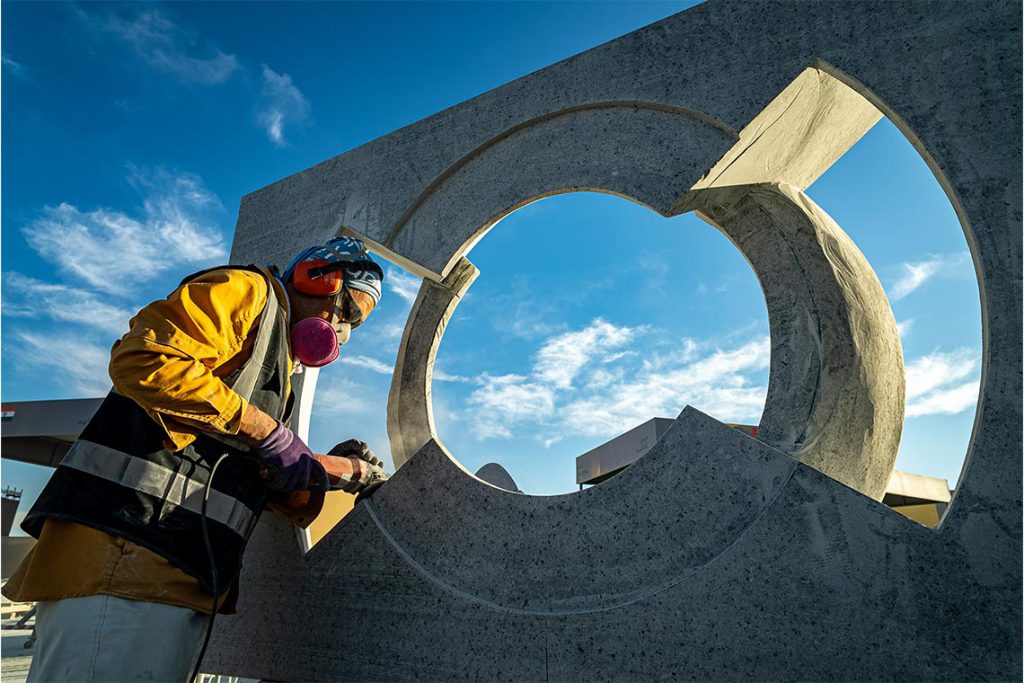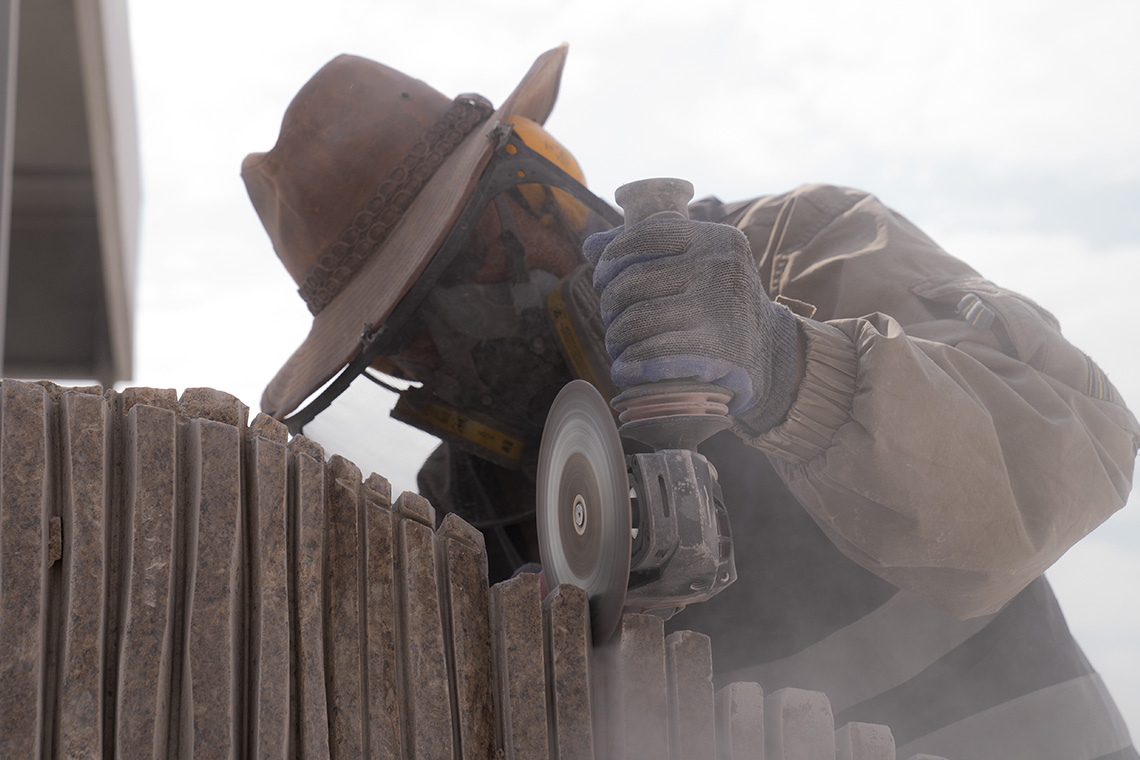Tuwaiq Sculpture 2025 continues to present fresh perspectives and foster new dialogues in a series of open-to-the-public events that say much about the Kingdom’s rich creativity.
Saudi Arabia’s contemporary art scene has always taken advantage of the open space at its disposal. From the Jeddah Sculpture Museum, an open-air display first launched in the 1980s under Jeddah Municipality and now additionally supported by Abdul Latif Jameel Community Initiatives, to the biennial Desert X AlUla (2020–), a land art partnership between the Royal Commission for AlUla and Desert X, and Riyadh Art’s annual light art festival Noor Riyadh (2021–), outdoor public spaces are an integral part of the Kingdom’s artistic offer.
Tuwaiq Sculpture is but another example, an international sculpture symposium and exhibition that takes place in the Saudi capital under the auspices of The Royal Commission for Riyadh City and Riyadh Art, an organisation dedicated to turning the Kingdom’s capital into a leading cultural destination. By integrating public art into the city’s landscape, local and visiting audiences are given an opportunity to engage with Riyadh’s dynamic creative ecosystem, deepening their understanding and appreciation of Saudi Arabia’s evolving cultural scene.
Since 2019, Tuwaiq Sculpture has hosted over 120 internationally renowned sculptors. This year’s edition, running from 15 January until 24 February, features 30 artists spanning 23 nations, including seven from Saudi Arabia itself. Selected by a jury panel that received over 750 applications from 80 countries, the chosen Tuwaiq Sculpture 2025 artists were invited to partake in a live sculpting event that ran until 8 February. The final works, on show at ROSHN Front, will later become an integrated element of the city’s urban fabric as part of Riyadh Art’s Permanent Collection.
Addressing the theme From Then to Now: Joy in the Struggle of Making, and guided by lead curator Sebastian Betancur-Montoya and associate curator Dr Manal Al-Harbi, artists were provided the opportunity to investigate and experiment with cultural narratives, as well as instigate fresh dialogue, through the medium of stone. The core of Tuwaiq Sculpture 2025, which positions itself as a platform fostering collaboration and exchange, is mirrored in this curatorial team and remit. Betancur-Montoya, whose approach sits at the intersection of art, architecture and activism, comes together with Saudi academic and sculptor Al-Harbi, who has exhibited across the world and is committed to broadening sculptural practice in the Kingdom. The theme, in turn, speaks to a universal truth of art making: it is never complete. Embracing the poetics of artistic struggle – one where a creator must choose to abandon a piece rather than “complete” it – the curatorial vision suggests this unresolved journey is in actuality a source of freedom and fulfillment.

The artists, who engaged with this shared, contradictory condition for 25 days of live creation, each brought their own sensibilities to the process. Amplifying their voices on a global stage, the strong showing of Saudi artists demonstrates the Kingdom’s investment in its own talent. Local representation includes Bodour AlAqidi, who translates her award-winning calligraphy and ornamentation skills into three dimensions; Ali AlHamouood, likewise blending script with form but tackling the human condition; and Ali AlMalky, whose abstract sculptures and longstanding career speaks to the beauty of the creative journey. There is also Noha AlSharif, with a practice that merges Islamic art tenets with global influences to spark spiritual reflection; Rawan AlShehri, inspired by local heritage and who combines organic materials with modern know-how to address shifting traditions; Ali AlTokhais, an established stone carver embodying local craftsmanship; and Ebtesam Saleh, who represents the new, boundary-pushing generation of Saudi sculptors. International participants include Japanese sculptor and academic Hiroyuki Asakawa, whose works are inspired by mathematics; Bahraini sculptor Khalid Farhan, who places Freud at the centre of his practice; Australian creator Jacob Lucius Cartwright, whose body of work merges sound, sculptures and attentive listening; and Egyptian installation and sculpture artist Khaled Zaki, who represented his country at the 2013 Venice Biennale. Other artists hail from Colombia, India and Russia.
Tuwaiq Sculpture rounds off its focus on engagement and encouragement of new artistic dialogue with diverse public programming that includes panel discussions, workshops and tours. Embodying the Kingdom’s innovative spirit as it forges a richer creative economy, Tuwaiq Sculpture continues to be a platform that acknowledges artistry as fundamental to the cultural life of cities, a tool for wellbeing, a meeting point for international communities and a champion of creativity.
This feature is in collaboration with Tuwaiq Sculpture 2025



